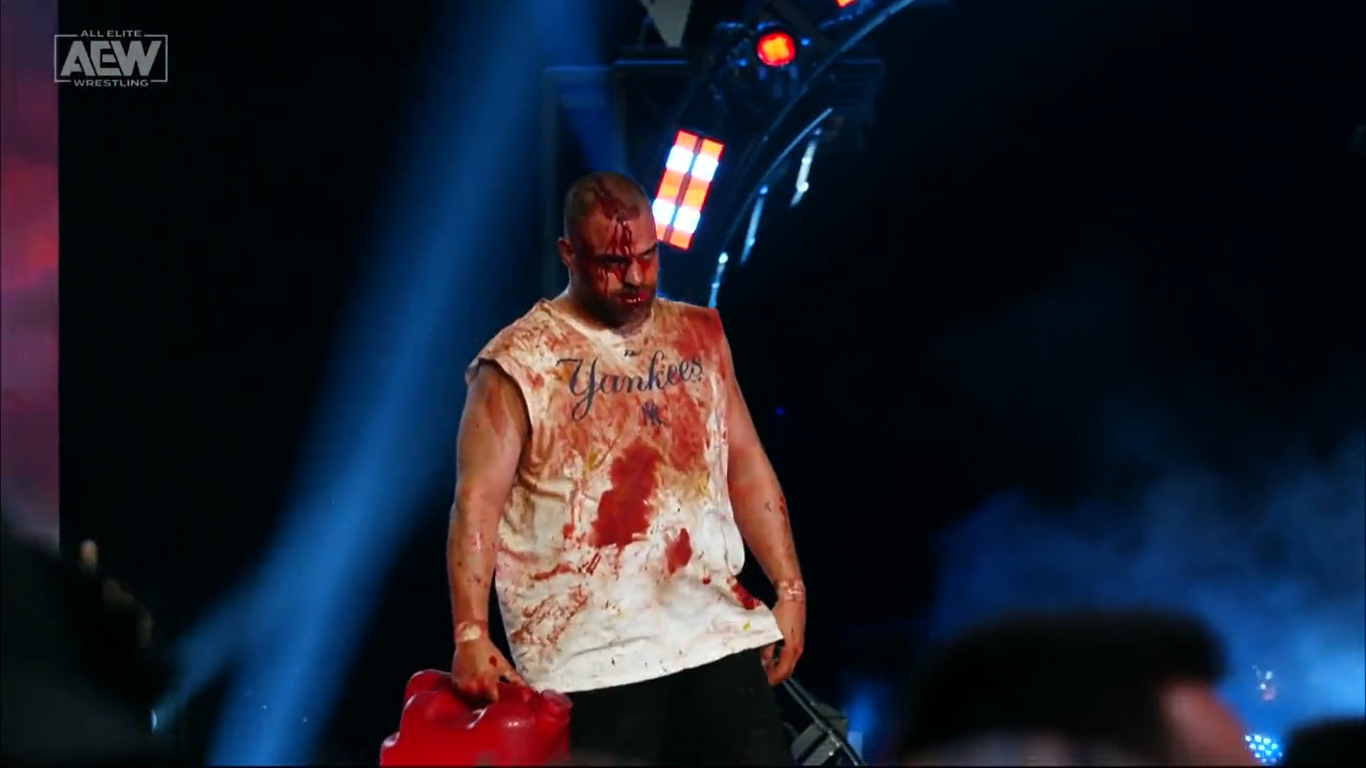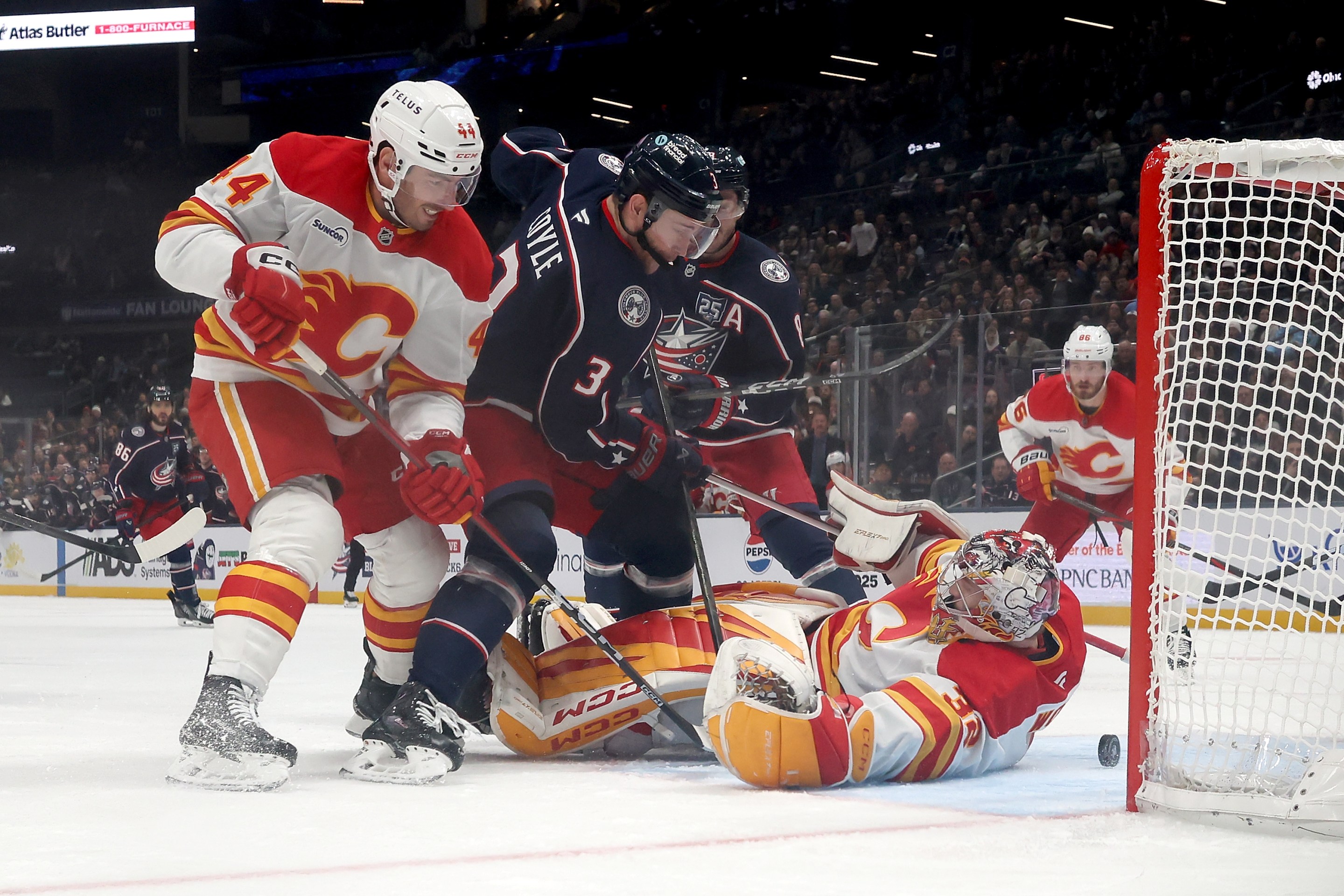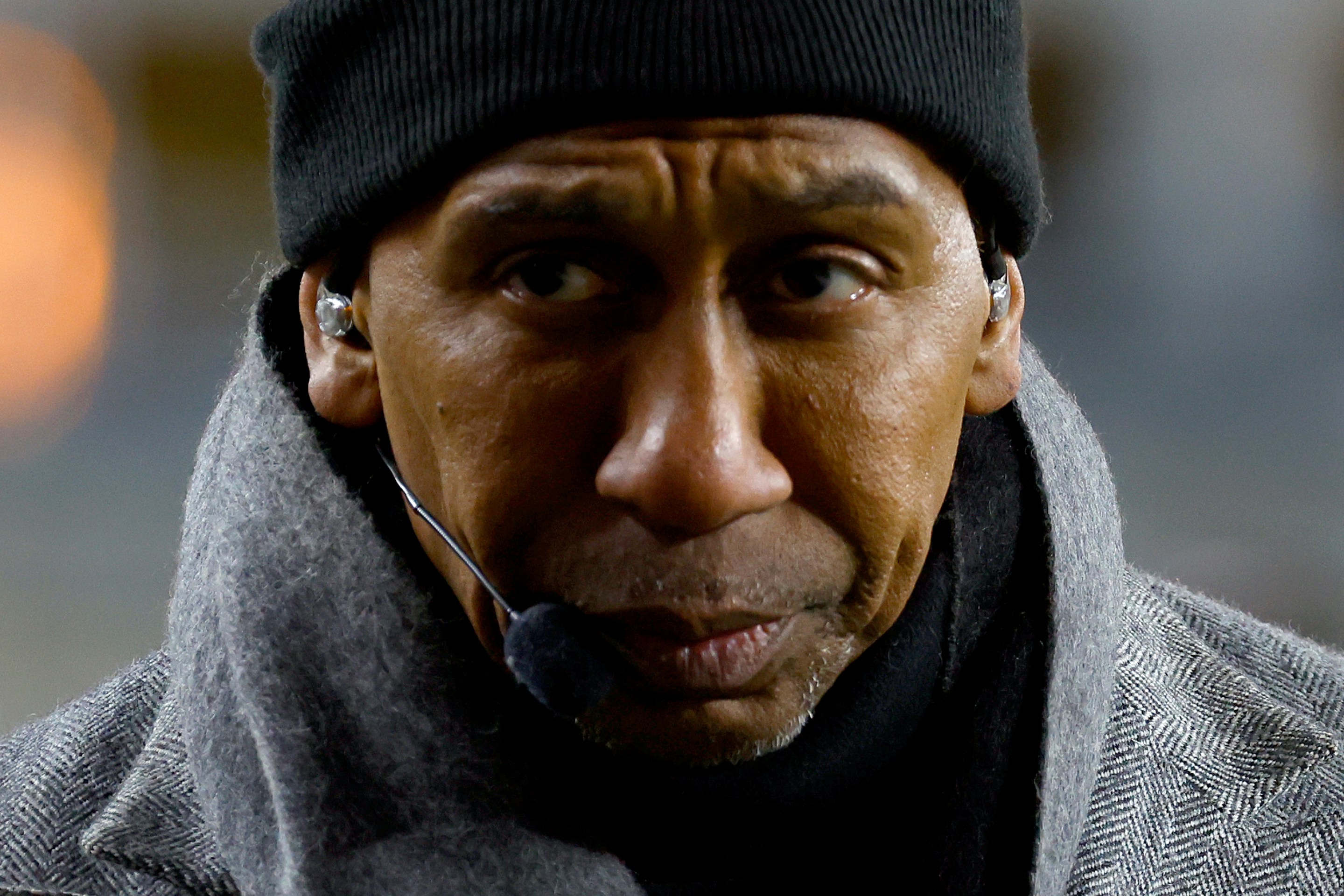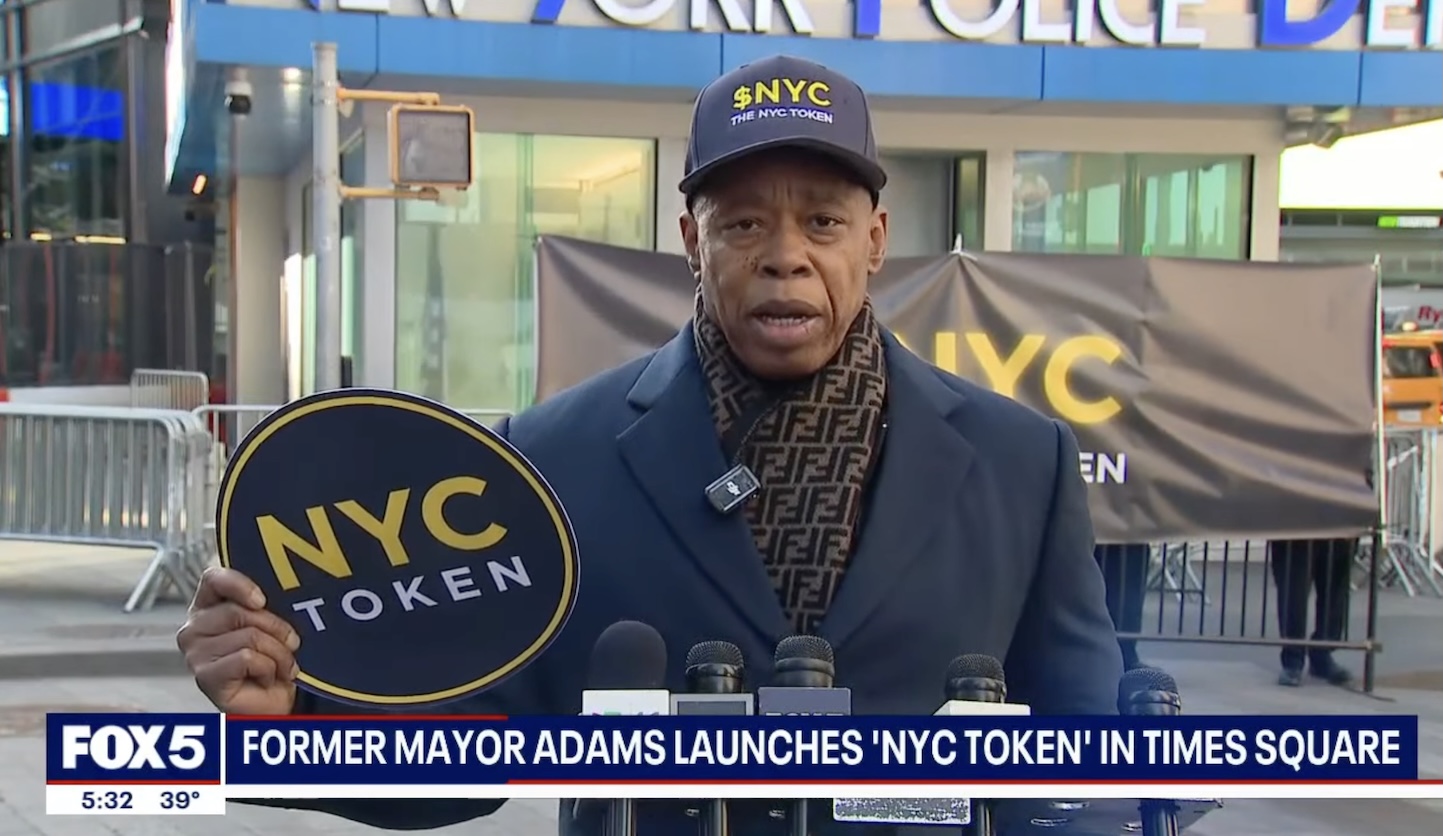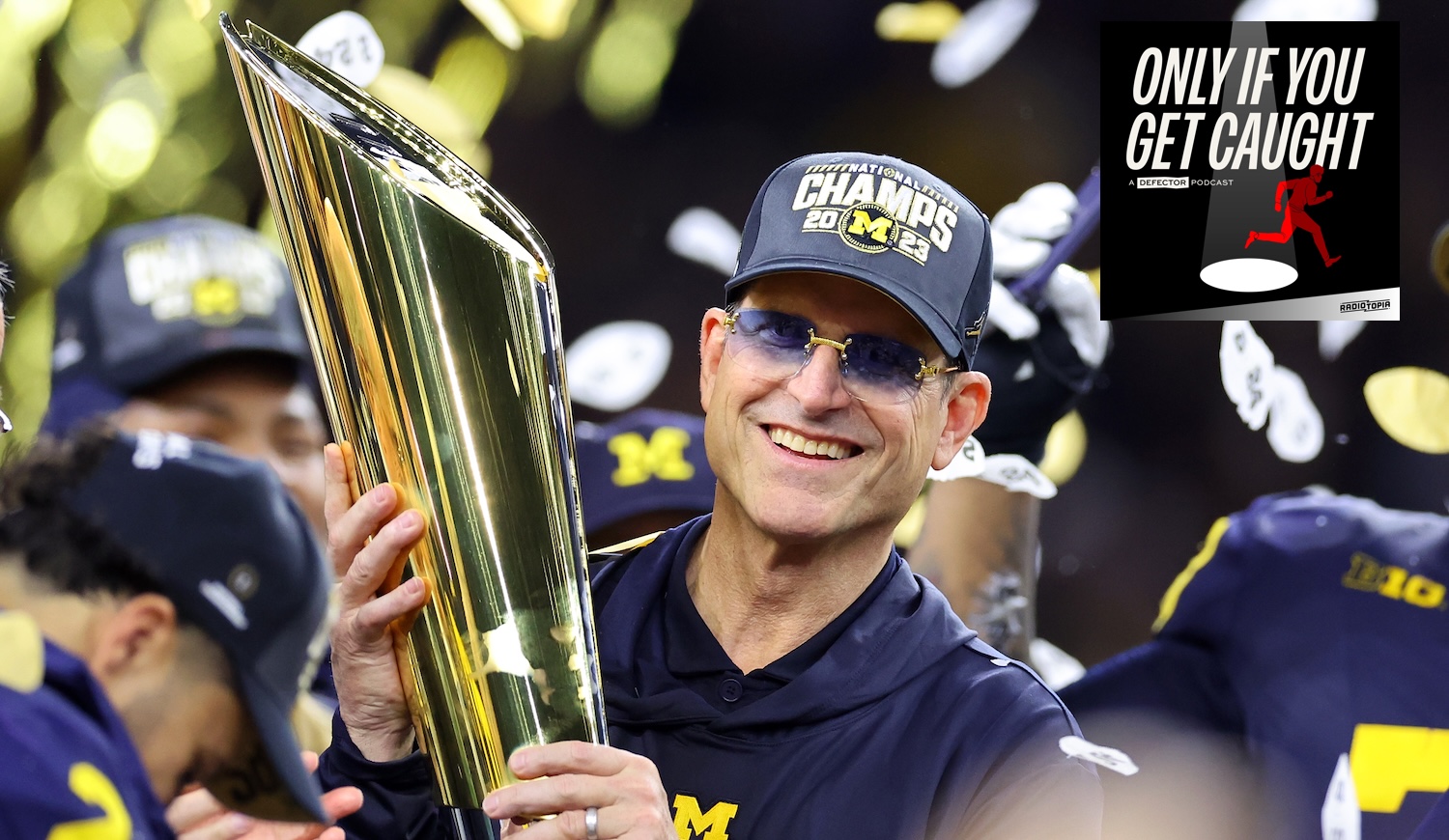I tell people who are skeptical about my love for pro wrestling that, actually, it's obvious why I would enjoy it so much when you break it down to its individual pieces: I like live theater, I like athletics, and I like hot people doing flips. That's the simplest pitch I can make for appreciating this art/sport/thing, but I do leave out one other itch that it scratches: the urge to obsessively catalog and rank an insurmountably large set of performances.
Out of the more than 10,000 documented wrestling matches that took place this year, here are 15 that I liked from 15 different promotions, presented in chronological order, with links included for the ones you can watch without much of a hassle. (I'm sure you're smart enough to find the others, too.)
Michael Oku vs. Will Ospreay, RevPro High Stakes, January 29
Some wrestling-knowers would like you to believe that the classic black-and-white delineations of "babyface" and "heel" are outdated, but I think that's a psyop encouraged by performers and producers who are afraid of the challenge that is getting the desired reaction out of an increasingly know-it-all crowd. Even in 2022, as fans care more and more about a wrestler's ability to work and less about the morality of their character, the best kind of match is still one where the crowd badly wants the good guy to win. And this Oku vs. Ospreay epic, from London on what's left of the British indie scene, is exactly my shit because of how unabashedly it leans into traditional good vs. evil storytelling.
Ospreay, who further established himself as one of the world's best as he racked up miles at a breakneck pace in a prolific year, is a highly polarizing talent for reasons I will struggle to confine to this paragraph. I would argue that he's like the Tarantino of wrestling. He's a revolutionary talent who's extremely good when he plays to his maximalist strengths, but you wouldn't want him making every movie, and also maybe he'd be a bit off-putting to hang out with in real life. In this match, though, he was a flawless heel against the charismatic underdog Oku. He played the role of superstar too accomplished to respect this lesser-known challenger to the British title, tormented Oku's loved ones at ringside, then made Oku look heroic as he built momentum with some very effective-looking offense. Even so long after the death of kayfabe, I don't know how you can watch this as a disinterested evaluator. After everything that happens in this match, anyone with a soul should be willing Oku to victory.
One of my favorite matches of the year. MUST WATCH 5 Star Match from Will Ospreay & Michael Oku - RevPro (01.29.2022) pic.twitter.com/BmSmn6Uiug
— Dark Puroresu Flowsion (@PuroresuFlow) November 21, 2022
Cody Rhodes vs. Seth Rollins, WWE WrestleMania 38 - Saturday, April 2
It felt a little strange when the news broke that Cody Rhodes would be leaving AEW, a company he played a critical role in establishing, to go back to the promotion that had treated him like a joke. But as soon as he made his entrance at night one of WrestleMania, it all made sense. In AEW, it had become the cool thing to boo Cody for his perceived egotism (I think he was in a creative rut but worked his ass off for those fans). But as soon as he set foot in WWE again, he was greeted like the most popular guy in the business, and before an injury derailed the rest of his year (he insisted on working through it for one last match, like the single-minded freak he is), he seemed to be the favorite to take the company's main title off Roman Reigns.
Cody's an old-school entertainer who emanates nostalgia for the pre-internet era of his father, Dusty, and though it felt like his heart was always 100 percent with AEW, it felt right to see his self-conscious showmanship fit itself into the more tightly controlled atmosphere of WWE. He and Seth Rollins—who's been wasted in recent years but still knows how to do a great stadium-sized match—didn't squander the big return pop and built a story that perfectly crescendoed with near-fall after near-fall until the finish. Most damagingly for AEW as it tried and mostly failed to assert itself as more than just an alternative, it put a brighter spotlight on Cody than his old employer could have managed.
Another phenomenal match. A beautiful finish with the Dusty Rhodes tribute. Cody Rhodes defeats Seth Rollins. MATCH OF THE NIGHT. #WrestleMania pic.twitter.com/8XpecJnHu3
— 𝙏𝙝𝙚 𝙂𝙤𝙤𝙙 𝘽𝙧𝙤𝙩𝙝𝙚𝙧•𝙋𝙝𝙖𝙧𝙖𝙤𝙝 (@TranquiloSZN) April 3, 2022
Lee Moriarty vs. Mike Bailey, Enjoy Renegade, April 9
No one owned the indies in 2022 like "Speedball" Mike Bailey. In a triumphant return to America after a five-year ban for trying to enter without a visa, the Quebec native was a constant presence from coast to coast, and it seemed as though every weekend people were buzzing about a new match he had with a new opponent. Cagematch has him at 135 bouts this year, as of this writing, and though there are plenty to choose from my personal favorite was this little showdown with Lee Moriarty in Pennsylvania.
Lee and Speedball are a great fit because they're equally athletic and both game for big spots but also don't just mirror each other's moves. Bailey has this enthusiastic kung-fu movie style, while Moriarty hews closer to more realistic amateur-style mat-based work. They probably could have gelled anywhere, but the setting of this match elevated it to greatness. In tight confines, in front of a passionate pro-Moriarty crowd, each performer seemed to possess a limitless supply of energy. This was a chaotic match that never once stopped to catch its breath.
A little preview of tonight's epic first-time encounter between @theleemoriarty and @SpeedballBailey.
— Enjoy Wrestling (@EnjoyWrestle) May 19, 2022
Don't blink or you'll miss something amazing!
The #EnjoyRenegade Series Finale
TONIGHT 8PM EST
FREE FREE FREE
Link's in the replies. Don't miss out! https://t.co/CmXDHm70Up pic.twitter.com/337nq2LRs2
Josh Alexander vs. Moose, Impact Wrestling Rebellion, April 23
Still kicking after 20 tumultuous years, Impact Wrestling is more obscure now than it was when a bunch of Monday Night Wars veterans made them a distant but visible No. 2 promotion. At least they have Josh Alexander waving their flag as champion.
The 35-year-old Canadian slowly worked his way up the Impact ladder after arriving in 2018, and the company's handling of his eventual title pursuit was one of the best in-ring journeys you'll see anywhere. Alexander went on an electrifying run with the second-tier X Division title, used that belt to get a shot against main champ Christian Cage, won, and then immediately lost it when former Atlanta Falcons lineman Moose took advantage of his weakened state to cash in his own title shot.
The rematch between these two, months later in Poughkeepsie, was a cathartic affair with a big-fight feel. Alexander, in storyline, wrestled the match of his life, coming back again and again after absorbing the power shots of Moose. (Yes, his name is Moose. Just Moose. Get over it!) With his wife and young son ringside, Alexander really made me feel like he earned that fake belt, and as he continues to defend it in excellent matches, the long-term stakes of this rivalry is still the measuring stick I use for all his follow-up performances.
.@Walking_Weapon is the NEW @IMPACTWRESTLING World Champion!#REBELLION pic.twitter.com/ZPdXaeouJO
— IMPACT (@IMPACTWRESTLING) April 24, 2022
Jon Moxley vs. Tom Lawlor, DEFY Wild Ones, April 30
Moxley rules. Not only did he put AEW on his back this year, becoming champion multiple times in CM Punk's place and making each of his many defenses a bloody, boundary-pushing affair, but he also kept on being the biggest star who regularly makes appearances on the indies. Mox elevated the GCW title with a variety of defenses that ranged from hardcore to brilliant to homoerotic, he raised the profile of Revolver in the Midwest, and in this absolutely awesome clash in Seattle for Defy, he gave just as much of himself as he would if this were a TV main event with an audience of a million. It doesn't matter who or when or where; Moxley always performs at 100 percent, and his consistency made him this year's clear MVP.
Lawlor's a good opponent for him. He's got tough-guy cred as a former UFC fighter but isn't afraid to be a little silly in order to draw the boos. In this heavy-hitting, violent fight between the two in front of an audience that was fiercely on Moxley's side, the pair showed sharp instincts for managing the flow of the match in order to get the best reactions: Lawlor goes on offense just long enough so that Moxley's replies get huge cheers, and then Mox gets cut off before he reaches diminishing returns. This was an invigorating performance that's far smarter than it looks at first glance.
ICYMI: DEFY "Wild Ones" is now available at https://t.co/9GsGC2y3Q8 featuring a blood bath between Jon Moxley and "Filthy" Tom Lawlor. Viewer discretion is advised! pic.twitter.com/wyASOiRAkl
— DEFY Wrestling (@defyNW) May 6, 2022
Hiroshi Tanahashi vs. Tomohiro Ishii, NJPW Wrestling Dontaku, May 1
New Japan Pro Wrestling's golden generation, which brought the promotion to tens of thousands of new fans in the West who had never seen wrestling like the kind they could now stream for ¥999 a month, is starting to show its age. Hiroshi Tanahashi, now 46, still possesses effortless charm but makes every move look like a fight against his own well-being. Tomohiro Ishii, 47, is being booked to lose more than ever before. Katsuyori Shibata, 43, is lucky to be alive. Minoru Suzuki, 54, hasn't lost his aura of menace but has clearly settled into a formula that minimizes his limitations. Even Tetsuya Naito, 40, wrestles like a weathered, crafty veteran instead of the enrapturing iconoclast he was when he became a star.
But even though the promotion has been bowed since its circa 2018 peak, with the absence of former top guys like Kota Ibushi, crowds still limited by COVID restrictions, and the impossible task facing this new, inevitably lesser crop of young talent, NJPW can still put on a fantastic match. And despite the drop-off in athleticism from the wrestlers in their mid-40s, their age and their history has opened up new avenues for storytelling. Naito's pursuit of the title feels increasingly desperate. Suzuki is trying to cling to his old persona as long as he physically can. Shibata has made a terrifying comeback from a 2017 injury that nearly killed him. And Tana and Ishii had my favorite match of NJPW's year at Wrestling Dontaku in Fukuoka.
This is a match that only worked because of how well-established, dare I say iconic each man's unique personality has become to NJPW fans. Tana is the golden boy, the flawless face of the company, who was born to be not just a wrestler, but a famous and beloved one. Ishii, meanwhile, is the cult favorite, never the main champion but always in there, night after night, absorbing punishment into his short, square frame and then going "BLEH" into the other guy's face and knocking him out. No wrestler has more of that dog in them.
This match was a treat for longtime fans because each man took on a little of the other's distinct mannerisms in order to try to win, showcasing the ways in which each of their approaches can be a strength in itself. There's an air of finality that makes it special, as if this performance was Tanahashi's tribute to Ishii and vice versa, and for that reason, I hoped that the three-count would never come.
Highlights from 'WRESTLING DONTAKU 2022’ (May 1st)
— njpwworld (@njpwworld) May 2, 2022
Watch now in English:https://t.co/a9aSdxAr2z
8th match: IWGP UNITED STATES HEAVYWEIGHT CHAMPIONSHIP
Hiroshi Tanahashi 🆚 Tomohiro Ishii#njdontaku #njpw #njpwworld pic.twitter.com/0j1C1glgI5
ASUKA vs. Syuri, Hana Kimura Memorial Show 2, May 23
Women's wrestling in Japan (also known as joshi wrestling) is in a pretty nice groove. Aside from gaining new exposure through crossovers with AEW and NJPW, the joshi promotions just happen to boast a spectacular collection of wrestlers right now. But one absence looms over them, and that's Hana Kimura, a performer made famous by the TV show Terrace House, who died by suicide at age 22.
This memorial show, which featured Hana's mother Kyoko wrestling her first match since being defeated by her daughter over five years ago, was main-evented by a first-time singles bout between two of the best women in the country. ASUKA, known as Veny in English promotions to avoid confusion with the WWE wrestler of the same name, is a versatile young freelancer who can do both fierce struggles and comedy matches, all while breaking barriers as a trans woman. Syuri is at the top of the Stardom promotion, with a shoot fighting background and a slightly unnerving magnetism. Together the two put on a hard-hitting athletic exhibition and a fitting tribute to a wrestler who had the potential to be a headliner of this new boom period. Even if Hana Kimura can't wrestle on the revitalized joshi scene, she remains a critical part of it.
Go to Reddit for highlights, or watch on the Internet Archive
Anarchy In The Arena, AEW Double Or Nothing, May 29
I'm still stunned that this actually lived up to its name. "Anarchy in the Arena" initially just seemed like a quirky tagline for this 5-on-5 match at AEW's Vegas PPV, created as a continuation of the "Stadium Stampede" that main-evented the last two Double Or Nothings in Jacksonville. But the word "Anarchy" does not at all oversell what happened, as a team of tough guys went to war with a team of goofballs all across the building. There was gasoline, there was barbed wire, there was a broken ring, there was "Wild Thing" playing on a loop—anything you've ever wanted to see in a hardcore match was there.
And somehow, even more miraculously, it wasn't even all that messy or hard to follow. The crowd in attendance got what's been described to me as a glorious immersive theater experience, where something new and exciting was happening everywhere they looked. But for those at home, the broadcast pulled off the difficult challenge of catching all the most important developments as they happened live, and instead of just telling the story of a chaotic parade of standout moments, this match actually built to a logical climax that played off established character traits. You can just tell how much the people who put this together love pro wrestling, and even though AEW's year was defined more by its off-camera messiness than its in-ring triumphs, a violent spectacle of this magnitude is something no other promotion would even try.
.@JonMoxley, @Santana_Proud, @bryandanielson, @ortiz_powerful and @MadKing1981 enter the arena and Anarchy erupts! Order #AEWDoN NOW on @BleacherReport & Internationally on @FiteTV / https://t.co/30z8K48kUT pic.twitter.com/mlvKUxSDj0
— All Elite Wrestling (@AEW) May 30, 2022
ASF, Komander & Laredo Kid vs. Black Taurus, Gringo Loco & Jack Cartwheel, The People Vs. GCW, July 29
Sometimes, the story of a wrestling match is just "everybody wants to do the biggest, most absurd stunt they can," and that's OK. Komander was the king of those showcases this year, pulling off GIF-able high spots across North America. But in this GCW six-man lucha libre fireworks show, he had plenty of competition. Everyone in this match can do dizzying gymnastics, and each time you think they've hit the craziest possible move, they go one better. This is the NBA Jam version of combat sports, and it's strong evidence for why GCW has become such a vital touring presence in the U.S.
Komander uses the Base God Gringo Loco to hit a PoisonRana at Friday’s GCW (07.29.2022) pic.twitter.com/afwS597nHf
— Dark Puroresu Flowsion (@PuroresuFlow) July 31, 2022
Watch (with some guy commentating over it) on Youtube
Emi Sakura vs. Mizuki, DPW Believe The Hype, August 6
Deadlock Pro-Wrestling, a North Carolina–based indie that's barely a year old, came from nowhere to put on some of the best and most complete indie shows this side of Pro Wrestling Guerilla. With a combination of U.S. mainstays, their own go-to guys, and a lot of Japanese talent crossing the ocean to make appearances, DPW's been able to mix and match a heaping spoonful of must-see matches. This was one of the coolest.
Sakura's a matriarch of the Japanese women's scene—a trainer of tons of young talent plus an accomplished wrestler in her own right who's still got it at 46. Mizuki is one half of the best women's tag team in the world, which I'm not afraid to tell you is called the Magical Sugar Rabbits. Even in an unfamiliar setting (this was Mizuki's first-ever match in the States), this pair showed a smooth in-ring chemistry and enjoyed the enthusiasm of a welcoming crowd. Playing up the contrast between Mizuki's twee exuberance and Sakura's assured power moves, they put on an engaging, tightly packed 10 minutes of entertainment. I guess it betrays my own bias that I'm surprised that this happened in Raleigh.
Check out some highlights over here.
Akito vs. Joey Janela, DDT Road To Peter Pan 2022 In Korakuen Hall ~ Let's Shout!, August 14
DDT, one of the second-tier Japanese promotions, had a great year highlighted by the emergence of Konosuke Takeshita as a can't-miss future star who's already caught on big with fans of AEW. (He just recently moved full-time to the States.) Kazusada Higuchi, their current champ, is also a boss who does these refreshingly straightforward no-nonsense title defenses. But what makes DDT special is its willingness to combine its more traditional main-event epics with plenty of experimental weirdness in other spots on the card.
It's not easy to make a silly wrestling match stipulation work in practice, but I really get a kick out of this one. There's one light tube in play during this "death match," and if a wrestler breaks it, he loses. So in this bout between Akito, who innovated this gimmick against ASUKA three years ago, and Joey Janela, a U.S. indie glue guy who's always game for exciting risks, the threat of clumsiness is just as serious as the threat of getting your face smashed in. Both wrestlers try to sucker the other one into breaking the tube and do a delicate dance around it whenever they come close. In avoiding this one unique pitfall at all costs, they're free from almost every wrestling cliche, and thanks to total commitment from each performer, this is an extremely enjoyable novelty.
WE HAVE NO MORE WORDS.
— DDT Pro-Wrestling (English) (@ddtproENG) August 14, 2022
🔽2-weeks FREE TRIAL!https://t.co/JOp6uUaCYf#ddtpro pic.twitter.com/jggNY1qFxI
El Desperado vs. Jun Kasai, JTO TAKA Michinoku Debut 30th Anniversary ~ TAKATaichiDespeMania, September 12
The fans ... they were cheering! They cheered at this show! Maybe that doesn't sound all that impressive, but noise-making crowds remained a rare gift at Japanese events in 2022, due to the government's ongoing COVID hypercaution. In this match, then, at TAKATaichiDespeMania—a fun little recurring side project from some New Japan performers, like Tom Tom Club was to Talking Heads—the fact that the wrestlers were met with something more than the usual claps and silence elevated this already-incredible match into something like a homecoming.
Jun Kasai is a death match legend, and El Desperado has death match experience but is better known for really good Jr. Heavyweight matches in the New Japan style. This match was about Despe doing his best to keep pace with the relentlessly sadistic Kasai, surviving a series of escalating weapons-based assaults for nearly a half-hour and using whatever cunning he could to muster an occasional upper hand. The image of a wild-eyed, bloodied Desperado with his mask around his neck will live with me for a very long time, and the electricity of the crowd was a well-deserved reward for a crowning achievement in the careers of both men. I can barely believe how amazing this was.
Sin lugar a dudas el combate entre El Desperado vs Jun Kasai tiene que ser el Deathmatch Of The Year por como fue construida la lucha, los spots fueron increíbles y la emoción de la gente es abrumadora #Taka #njpw pic.twitter.com/ksGRpkcAVc
— Rincón Destructor (@RinconDistroyer) September 20, 2022
Mei Suruga vs. Yuna Mizumori, Gatoh Move 10th Anniversary ~ Phoenix Rises, September 15
Mei Suruga is going to be a big deal. She's only 23 and has already popped up in several major promotions, charming audiences with an adorable personality and a ton of wrestling talent squished into a small package. As one of Emi Sakura's brightest young students, it's fitting that she headlined this milestone show in Sakura's promotion, and the older, more powerful Yuna Mizumori instantly made her the likable underdog.
Suruga has a character trait I appreciate: every time she gets a little too cocky and show-offy, she faces the consequences, because she's not physically strong enough to dominate the match in that way. It happened here, too, but as the match went on it devolves into an exhausted, intense back-and-forth in which each competitor was just desperately searching for that one thing to put them over. There were a few less-than-crisp moments that let slip the lack of experience on display, but this remains a very accessible match for all fans and, as much as I like Gatoh Move, hopefully a stepping stone to greater things for Suruga.
Never get cocky against Yuna Mizumori #gtmv 10 year Anniversary show #PhoenixRises @Mizm0ri pic.twitter.com/mcQjz7eF5L
— Death By Tiger (@DeathByTigerPW) September 19, 2022
La Jarochita vs. Reyna Isis, CMLL 89. Aniversario, September 16
I only watched one CMLL show this year, but I picked a great one. The 89th anniversary show of the oldest active wrestling promotion on the planet was like the platonic ideal of lucha libre, with all-action wrestling-as-ballet multi-man choreography and tense mask vs. mask showdowns, all in front of a red-hot crowd at the legendary Arena México.
All three matches in the video linked below are excellent in their own way, but La Jarochita and Reyna Isis stood out with one of the most engaging women's matches of the year. There's just nothing like a mask vs. mask contest, because it always marks a turning point in someone's career and, unlike most wrestling stipulations, rarely gets reversed. There's a legitmate, non-kayfabe sense of loss at the end of these battles, and the emotion in the ring as the defeated wrestler's identity is revealed goes beyond the realms of performance or art. This match is the history, the pageantry, and the future of lucha libre all rolled into one.
La Jarochita with a nice Tope, and she rains down the fists afterward! @ItsEvolutionPod pic.twitter.com/BEtH9GI4D2
— Big Wood (@BigWoodieStyle) September 24, 2022
KAIRI vs. Mayu Iwatani, NJPW/Stardom Historic X-over, November 20
I'm not sure I can write this without just gushing about Mayu Iwatani. Maybe I shouldn't try. Mayu is the down-to-earth, relatable, heart and soul of Stardom, rising from total social isolation as a young girl to become the face of Japan's biggest women's promotion. From her baseball-throwing entrance to her zombie-face comebacks, I find her character truly inspirational. My morning alarm is her theme song. I bought tickets to New Japan's New York show this year pretty much just to see her and Kazuchika Okada. There's no wrestler that makes me feel better when they win.
Stardom as a whole suffers, I think more than people like to admit, from the all-clap crowds that just can't match the intensity of its lengthy featured epics. But this particular match, main-eventing a dual bill with New Japan, was so compelling that the lack of cheers was irrelevant. KAIRI, who's more globally famous than Mayu because she left Stardom for a stint in WWE, is a perfect foil as a more traveled, more independent wrestler who in kayfabe probably has Mayu beat on talent. But the point of Mayu's character is not to see her squash her opponents wire to wire; it's to see her fight back and fight back and fight back some more. And as she refused to quit, and the match went on, this reunion of two women who were once on the same path became genuinely moving. I'm disappointed that the result likely means Mayu isn't earmarked for more U.S. appearances. But as Stardom's profile continues to grow and the fans are allowed to voice their support live, I think she'll be all right.
The last few minutes are here. This list is over!
